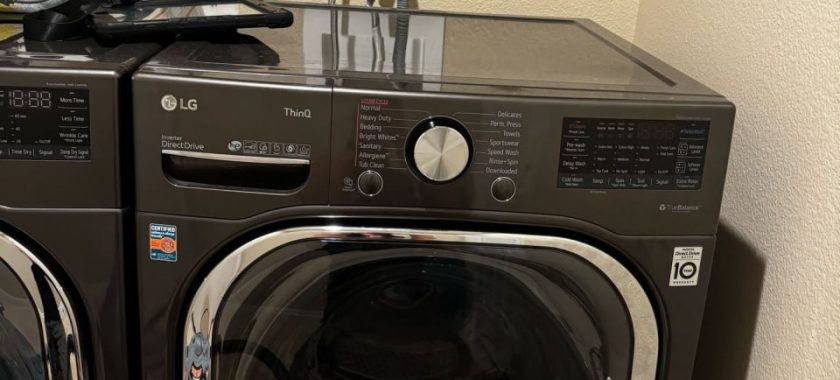Clothes dryers are one of the most essential appliances in modern households, saving time and energy by efficiently drying laundry. However, dryers are also one of the leading causes of house fires, often due to overheating. Knowing how to prevent dryer overheating is essential to maintaining your appliance’s longevity, safety, and efficiency. Here, we’ll share essential tips for avoiding dryer overheating and ensuring your appliance remains in top condition.
⠀
- Regularly Clean the Lint Filter
Every time you use your dryer, lint from clothing collects on the lint filter. If not cleaned regularly, this buildup can block airflow, causing the dryer to work harder and overheat. To prevent this, make it a habit to clean the lint filter after every load. Simply remove the filter, clear off the lint, and place it back. Occasionally, wash the filter with soap and water to remove any residue that may further clog airflow.
⠀
- Check and Clean the Vent System
The venting system plays a critical role in allowing hot, moist air to escape from the dryer to the outside of your home. Over time, lint and debris can accumulate in the vent, blocking airflow and causing your dryer to overheat. Clean the vent system at least once a year, or more often if you notice any unusual heat or if drying cycles take longer than usual. This can be done with a vacuum or a special dryer vent cleaning kit. If the task seems challenging, a professional service like Chula Vista Appliance Repair Company can help you with comprehensive vent cleaning.
⠀
- Avoid Overloading the Dryer
While it may be tempting to throw in an extra-large load to save time, overloading your dryer can lead to overheating. When a dryer is overloaded, clothes don’t have enough space to move around freely, which reduces airflow and increases heat buildup. Overloading also causes strain on the motor, potentially leading to mechanical failure. Stick to smaller loads to allow optimal airflow and prevent overheating.
- Install Your Dryer Correctly
Proper installation of your dryer is vital to ensuring its safe and efficient operation. The dryer should have enough space around it to allow ventilation. Avoid using plastic or foil ducts for the venting system, as they are more prone to clogs and can easily catch fire. Instead, use metal ducts, which are more durable and fire-resistant.
⠀
- Use the Dryer’s Automatic Shut-Off Feature
Most modern dryers have automatic sensors that detect when clothes are dry and shut off the machine to avoid overheating. Make sure to use this feature rather than setting the dryer to run longer than necessary. Relying on timed cycles can lead to overheating if clothes dry more quickly than expected. Automatic shut-off not only prevents overheating but also conserves energy and extends the life of your appliance.
⠀
- Give Your Dryer a Break Between Loads
Running your dryer continuously without allowing it to cool down can lead to overheating. After completing a cycle, let the dryer rest for a few minutes before starting another load. This break allows the motor and heating elements to cool down, reducing the risk of overheating and wear.
⠀
- Avoid Using the Dryer for Non-Clothing Items
Dryers are designed specifically for clothes, towels, and linens. Drying materials that are not meant for the dryer, such as plastic, rubber, or foam, can lead to overheating and pose a fire hazard. Always check the care label on each item to ensure it is dryer-safe.
⠀
- Inspect the Drum Seals and Heating Elements Regularly
Worn or damaged drum seals and malfunctioning heating elements can cause the dryer to operate inefficiently and overheat. If you notice that your dryer is taking longer to dry clothes, is making unusual noises, or is producing a burning smell, it may be a sign that these components need attention. Regular inspections and timely repairs by professionals can prevent these issues from escalating.
⠀
- Monitor Dryer Temperature During Operation
If your dryer feels unusually hot to the touch or is emitting excessive heat, it could indicate a potential overheating problem. Monitoring the dryer’s temperature and promptly addressing any unusual heat can prevent further damage. Pay attention to warning signs such as burnt smells, long drying times, and increased humidity in the laundry room.
⠀
- Schedule Regular Professional Maintenance
Regular professional maintenance is one of the best ways to keep your dryer running safely and efficiently. A professional technician can perform a thorough inspection, clean the internal components, and address any underlying issues that may lead to overheating. Services like Chula Vista Appliance Repair Company offer specialized dryer maintenance, which includes checking the motor, heating elements, drum seals, and more, ensuring your dryer operates optimally.
⠀
Preventing dryer overheating requires regular maintenance, careful operation, and vigilance. By following these safety tips, you can avoid the risk of overheating, extend the lifespan of your appliance, and ensure it operates efficiently. Remember, regular maintenance not only keeps your dryer safe but also helps you save on energy bills and costly repairs.
⠀
If you’re concerned about your dryer’s performance or need professional assistance with cleaning or maintenance, contact Chula Vista Appliance Repair Company. Our experienced technicians are ready to help you keep your dryer in peak condition, ensuring safe and efficient operation for years to come. Don’t wait for a problem to arise—schedule a service today and experience peace of mind with every load.
Contact us
(619) 880-5508


